第59章
We have now spoken of the generation of other animals, those that walk, fly, and swim; it remains to speak of insects and testacea according to the plan laid down.Let us begin with the insects.It was observed previously that some of these are generated by copulation, others spontaneously, and besides this that they produce a scolex, and why this is so.For pretty much all creatures seem in a certain way to produce a scolex first, since the most imperfect embryo is of such a nature; and in all animals, even the viviparous and those that lay a perfect egg, the first embryo grows in size while still undifferentiated into parts; now such is the nature of the scolex.
After this stage some of the ovipara produce the egg in a perfect condition, others in an imperfect, but it is perfected outside as has been often stated of fish.With animals internally viviparous the embryo becomes egg-like in a certain sense after its original formation, for the liquid is contained in a fine membrane, just as if we should take away the shell of the egg, wherefore they call the abortion of an embryo at that stage an 'efflux'.
Those insects which generate at all generate a scolex, and those which come into being spontaneously and not from copulation do so at first from a formation this nature.I say that the former generate a scolex, for we must put down caterpillars also and the product of spiders as a sort of scolex.And yet some even of these and many of the others may be thought to resemble eggs because of their round shape, but we must not judge by shapes nor yet by softness and hardness (for what is produced by some is hard), but by the fact that the whole of them is changed into the body of the creature and the animal is not developed from a part of them.All these products that are of the nature of a scolex, after progressing and acquiring their full size, become a sort of egg, for the husk about them hardens and they are motionless during this period.This is plain in the scolex of bees and wasps and in caterpillars.The reason of this is that their nature, because of its imperfection, oviposits as it were before the right time, as if the scolex, while still growing in size, were a soft egg.Similar to this is also what happens with all other insects which come into being without copulation in wool and other such materials and in water.For all of them after the scolex stage become immovable and their integument dries round them, and after this the latter bursts and there comes forth as from an egg an animal perfected in its second metamorphosis, most of those which are not aquatic being winged.
Another point is quite natural, which may wondered at by many.
Caterpillars at first take nourishment, but after this stage do so no longer, but what is called by some the chrysalis is motionless.The same applies to the scolex of wasps and bees, but after this comes into being the so-called nymph....and have nothing of the kind.For an egg is also of such a nature that when it has reached perfection it grows no more in size, but at first it grows and receives nourishment until it is differentiated and becomes a perfect egg.
Sometimes the scolex contains in itself the material from which it is nourished and obtains such an addition to its size, e.g.in bees and wasps; sometimes it gets its nourishment from outside itself, as caterpillars and some others.
It has thus been stated why such animals go through a double development and for what reason they become immovable again after moving.And some of them come into being by copulation, like birds and vivipara and most fishes, others spontaneously, like some plants.